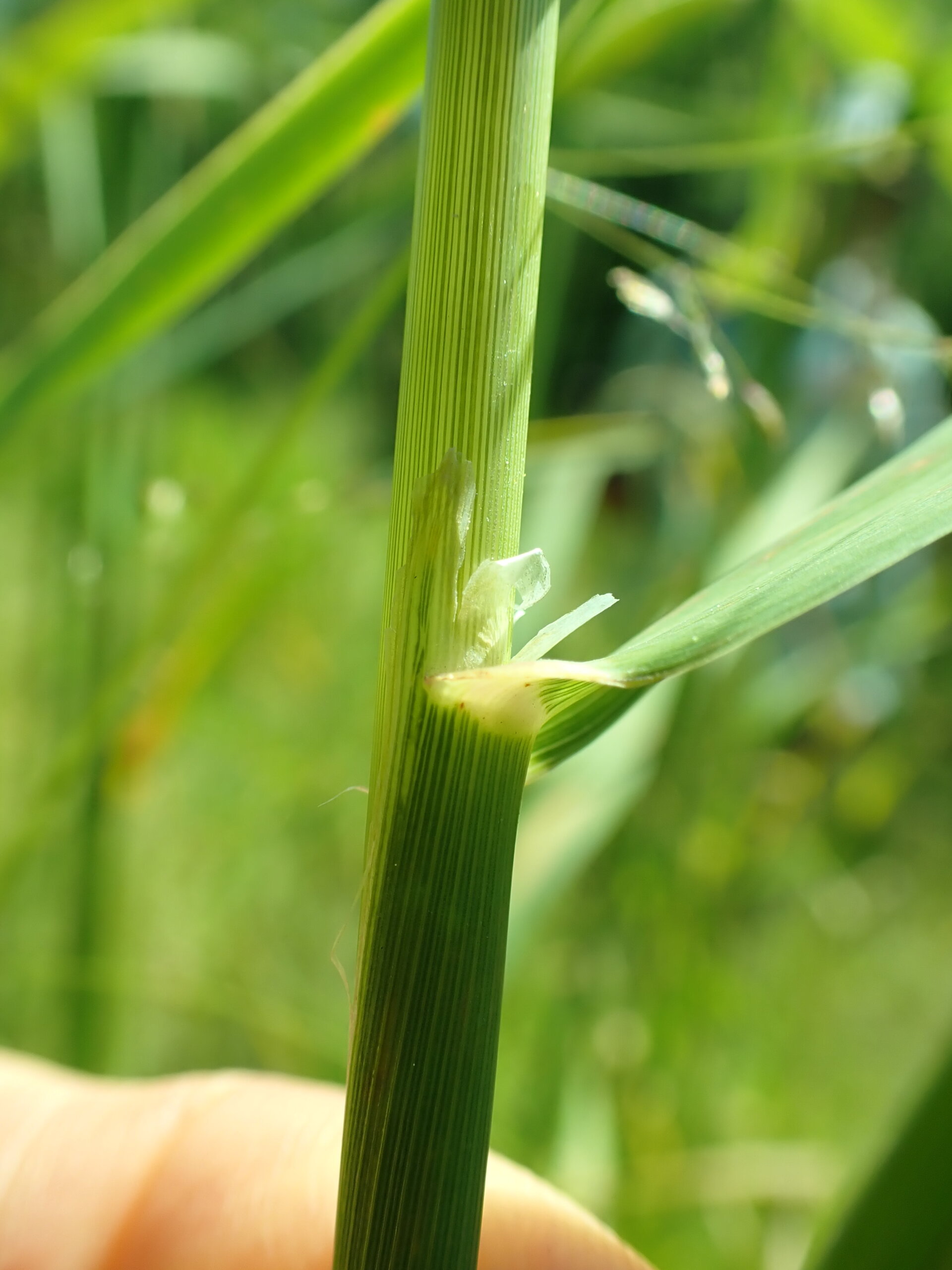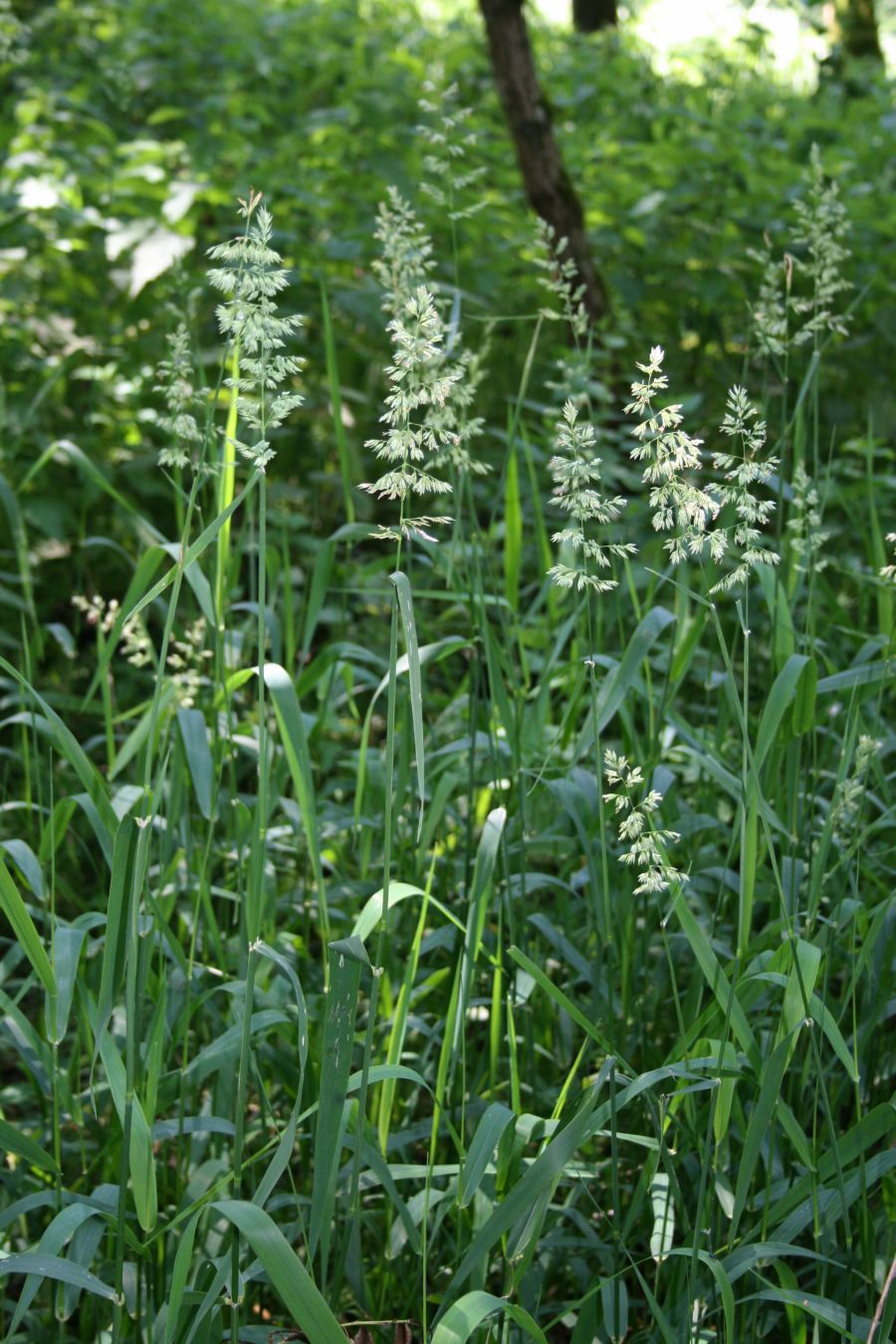Phalaris arundinacea
Description
- A tall, perennial bunchgrass that can reach 2m in height.
- Stems are hollow, smooth and sturdy.
- Leaf blades are 0.5-2cm wide and are flat, long and taper to a point. They sit at 45 degrees from the stem.
- Seed heads are dense, spiky and narrow when immature and open as they age. As they grow they change from green to purple-brown.

Introduction and spread
- It is widely thought that the invasive subspecies of reed canary grass is an escaped European cultivar, originally grown as forage for livestock as early as the 1800s.
- Roots produce vegetative shoots which produce new plants. Each rhizome can grow horizontally by more than 3m per year.
- Reed canary grass also reproduces via seed dispersal, producing over 500 seeds per plant that can be viable in the soil for up to 4 years. The seeds are buoyant so will float in water to new sites.
Consequences of invasion
- Can quickly form dense monocultures in wetland environments, displacing native species.
- It can alter water flow and increase bank sedimentation. Also known to obstruct salmon migration paths.
- It can prevent the establishment of deep rooting species.
Status in the CKISS region
- Reed canary grass is currently classified as Insufficient Information in the CKISS region on the CKISS Annual Priority list. This means that there is insufficient information for English holly about its distribution, impacts, potential for spread and/or feasibility of control.
Integrated pest management options
Control efforts should be targeted to smaller populations, requiring fewer resources and time. It is difficult to differentiate subspecies of reed canary grass. The invasive subspecies is likely to be on that is spreading rapidly and aggressively, displacing native plants and forming dense monocultures.
- Become PlantWise and learn about Grow Me Instead. Select alternative, non-invasive plants.
Prevention
- Pulling can be effective on small populations but will need to be repeated over several years.
- Mowing can be done prior to seed development to prevent production and dispersal.
- Larger pieces can be dug out, ensuring the root mass and fragments are completely removed to prevent regrowth.
- With larger infestations, solarization can be used alongside pulling/digging. This can be done with cardboard/tarps/mulch to cover the root mass preventing regrowth. Keep covered for at least one full growing season.
Mechanical control
- Grazing can be used to help reduce density and weaken plants to allow native species to grow up between.
- Shading – planting native shrubs/trees to cast shade – can be effective at reducing infestations as reed canary grass requires full sun.
- Prescribed burns can be effective in appropriate areas.
Cultural control
Additional resources


